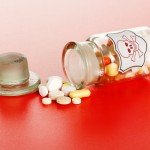Monday, September 30, 2019
Sunday, September 29, 2019
Saturday, September 28, 2019
Why Natural Medicine is NOT "Alternative"
Why Natural Medicine is NOT "Alternative": Natural medicine was once the only medicine. It wasn’t considered “an alternative.” That only happened much later, after synthetically produced, patent drugs came onto the scene, and profit and not safety and efficacy became the ultimate priority.
Wednesday, September 25, 2019
Tuesday, September 24, 2019
Monday, September 23, 2019
Friday, September 20, 2019
Thursday, September 19, 2019
Hi Dose IV Vitamin C plus thiamine and hydrocortisone for sepsis Paul Marik MD
Doctor discovers septic patients have scurvy – plus, a solution
 (NaturalHealth365) To understand the connection between sepsis and scurvy can be lifesaving for the 30 million plus people affected by this life-threatening organ dysfunction.
(NaturalHealth365) To understand the connection between sepsis and scurvy can be lifesaving for the 30 million plus people affected by this life-threatening organ dysfunction.
With a mortality rate surging as high as 60 percent, sepsis is the number one cause of death among hospitalized patients. And, despite the efforts of scientists and physicians, this dangerous systemic infection continues to claim millions of lives per year – worldwide.
In fact, over 100 clinical trials over the past 30 years have failed to improve outcomes for sepsis patients. But, inpublished research, Dr. Paul Marik – an ICU physician at Eastern Virginia Medical School – detailed how he used high-dosage vitamin C to save the lives of dozens of sepsis patients.
Dr. Marik bases his groundbreaking protocol on a simple premise: sepsis is really an acute form of vitamin C deficiency – a condition medically known as scurvy. If you thought scurvy was a disease of bygone times, think again. (keep reading for important details.)
Sepsis and scurvy: Will Western medicine ever embrace this simple solution?
In a study published in Chest in June 2017, Dr. Marik compared the outcome of 47 sepsis patients treated with high-dosage vitamin C with that of a control group of the same size. Dr. Marik’s treatment group received 1,500 mg of Vitamin C given intravenously every 6 hours, along with thiamine and hydrocortisone. The control group received standard treatment.
The results were nothing short of astounding.
Do NOT ignore the health dangers linked to toxic indoor air. These chemicals - the 'off-gassing' of paints, mattresses, carpets and other home/office building materials - increase your risk of headaches, dementia, heart disease and cancer.
Get the BEST indoor air purification system - at the LOWEST price, exclusively for NaturalHealth365 readers. I, personally use this system in my home AND office. Click HERE to order now - before the sale ends.
Only four (8.5 percent) of the treatment patients died, as opposed to 19 (40 percent) in the control group!
Dr. Marik reported that none of the patients in the treatment group developed organ failure (the usual cause of death in sepsis patients), and that the four patients who died succumbed to their underlying conditions – and not sepsis.
In addition, the treatment group patients were able to be weaned off vasopressors (blood pressure-supporting medications) within 24 hours of beginning the protocol.
Dr. Marik reports that he began using the protocol after reviewing existing literature on the use of vitamin C in patients with sepsis. When he administered the treatment to a 48-year-old woman dying of septic shock, he was astonished to see that the patient improved “strikingly” overnight – and proceeded to make a full recovery.
“Doctor, your septic patients have scurvy!”
Due to a long-ago genetic mutation, humans lack the ability to make their own vitamin C – and must obtain it through diet or supplementation. And, deficiencies can have catastrophic effects.
In fact, a number of trailblazing physicians and researchers – among them Linus Pauling, Thomas E. Levy, MD, JD and Dr. Mathias Rath – have reported that vitamin C deficiency is the engine that drives atherosclerosis and heart disease.
Now, Dr. Marik explores the link between severe vitamin C deficiency and sepsis.
In a paper published in the medical journal Critical Care – which he titled “Doctor, your septic patients have scurvy!” – Dr. Marik noted that 40 percent of septic shock patients have vitamin C serum levels under 11.3 u/mol/l, the medical threshold for scurvy.
And, the other 60 percent of sepsis patients are likely to have levels that are seriously insufficient (under 23 u/mol). In addition, half of all ICU patients – whether they have sepsis or not – have been found to have shortfalls in vitamin C.
The upshot is clear: low vitamin C levels are inextricably linked with sepsis – and are more common, and more severe, than previously thought.
Warning: Illness and injury can deplete the body’s stores of essential vitamin C
Because this amazing nutrient works so hard to battle disease and restore health, the body requires dramatically increased amounts of vitamin C in times of illness. Specifically, vitamin C limits the harm from sepsis by strongly reducing the pro-inflammatory response and preventing coagulation abnormalities.
A powerful antioxidant, vitamin C also aggressively scavenges harmful free radicals that promote the development of sepsis.
Tragically, vitamin C deficiency leads to dysfunction in the very biochemical pathways that make it possible to survive sepsis – illustrating the crucial importance of adequate levels.
Myths and misconceptions about vitamin C are rampant in the medical community
Unfortunately (but not particularly surprisingly), Dr. Marik’s work has been met with criticism and hostility by conventionally-trained physicians and “sepsis experts.” In fact, many in the Western medical community believe high-dose vitamin C to be not only ineffective in preventing and treating disease – but toxic and potentially damaging to the kidneys.
“Clinicians have very little understanding of the role of vitamin C in health and disease,” asserts Dr. Marik. He points out that many now-accepted medical facts (such as the fact that stomach ulcers are primarily caused by the H. pylori bacteria) were at first considered ludicrous.
Dr. Marik reports that his protocol actually improved the patients’ kidney function – clearly disproving the myth that vitamin C is toxic to the kidneys.
Vitamin C treatment could be useful in other diseases, adds Dr. Marik – including pancreatitis, depression, adult respiratory distress syndrome and asthma.
Update: At this moment, a large, randomized, multicenter study on vitamin C and sepsis is taking place across the United States. As the positive findings continue to accumulate, high-dose vitamin C may finally be recognized as a non-toxic, inexpensive and effective treatment for the deadly disease of sepsis.
Important note: if you have a loved one dying of sepsis in an ICU, demand that Dr. Marik’s protocol be initiated – immediately. Of course, the therapy is not meant to supplant or replace other established medical treatments, but is to be used in conjunction with them.
Sources for this article include:
Tuesday, September 17, 2019
Nuts to eat to avoid deadly heart attack
Want to protect yourself from a deadly heart attack? Eat more heart healthy nuts, research says

(NaturalHealth365) The data is in: you can’t make a cookbook full of heart healthy recipes without including nuts. In fact, eating raw nuts have long been recognized as a smart way to reduce the risk of a heart attack – due to the healthy fats, protein, minerals, vitamins, polyphenols and fiber found inside.
But, now, recent research reveals the power of this plant-based nutrition.
And, to state the obvious, everyone will benefit from this news, especially those with a family history of heart disease – a condition that’s responsible for 1 in 4 annual deaths in U.S. (alone), according to the U.S. Centers for Disease Control and Prevention.
Eating nuts – just twice a week – significantly lowers the risk of a fatal heart attack, says a team of researchers
Did you know that every 40 seconds, someone in the United States suffers a heart attack?
This shocking statistic is caused by many factors related to lifestyle, genetics and our environment. But, by adding nuts to the diet, Americans are poised to decrease heart disease’s impact on the health of an entire nation.
Do NOT ignore the health dangers linked to toxic indoor air. These chemicals - the 'off-gassing' of paints, mattresses, carpets and other home/office building materials - increase your risk of headaches, dementia, heart disease and cancer.
Get the BEST indoor air purification system - at the LOWEST price, exclusively for NaturalHealth365 readers. I, personally use this system in my home AND office. Click HERE to order now - before the sale ends.
A new study presented at the European Society of Cardiology Congress 2019 (in conjunction with the World Congress of Cardiology), found that people who eat nuts at least twice week were 17% less likely to suffer a fatal heart attack. This is based on food frequency questionnaire data obtained from over 5,600 participants over the course of 12 years.
The researchers found this significant and beneficial correlation between nut consumption and reduced heart attack risk to be “robust,” even after they adjusted for other factors that could influence their findings, including “age, sex, education, smoking, and physical activity.”
How much is enough? The European Society of Cardiology recommends 30 grams of unsalted nuts (e.g. 20 almonds) per day. One word to the wise: nuts tend to calorie dense. For example, just 8 walnuts or 10 macadamia nuts contain about 200 calories each.
In other words, don’t overdo it on nut snacking, because this could lead to excessive caloric intake. In addition, you may consider eating sprouted nuts – for its added health benefits.
Other research-backed ways to reduce your risk of cardiovascular problems
Without question, high quality (organic) nuts should be a staple in (almost) everyone’s diet. Naturally, there’s always an exception to the rule.
Having said that, choose nuts that aren’t covered in sugary additives or roasted in unhealthy oils. Organic Brazil nuts, pecans, walnuts, hazelnuts, macadamia nuts, almonds, pistachios and pine nuts are among the top picks.
As for ways to eat them, try sprinkling them on salads, making a homemade trail mix, topping them on chicken or fish, or simply enjoying them by the handful.
And if you’re allergic to nuts or simply don’t enjoy them, there are still plenty of other things you can do to protect your health and keep your heart strong:
- Manage your stress levels
- Exercise for at least 30 minutes at a moderate intensity level on most days of the week
- Eat lots of fruits and vegetables – aim for about 5 to 7+ servings per day
- Don’t smoke
- Practice deep breathing exercises
- Get enough sleep. The goal is 8 hours per night in a pitch dark and cool room
Sources for this article include:
Monday, September 16, 2019
Sunday, September 15, 2019
Drugs that can cause hearing loss and tinnitus
Drugs that can cause hearing loss and tinnitus
 (NaturalHealth365) From the common aspirin to chemotherapy, the drugs used to treat a variety of conditions can (in many cases) cause hearing loss and balance problems for the patient taking them, adding to concerns over whether certain pills do more harm than good.
(NaturalHealth365) From the common aspirin to chemotherapy, the drugs used to treat a variety of conditions can (in many cases) cause hearing loss and balance problems for the patient taking them, adding to concerns over whether certain pills do more harm than good.
Unfortunately, according to the American Speech-Language-Hearing Association (ASHA), by the time hearing damage caused by these drugs is realized, it can be too late to avoid permanent damage.
In fact, more than 200 prescription and over-the-counter medications used routinely today to treat everything from pain and serious infections to cancer and heart disease carry a strong likelihood of causing lasting, and often permanent, ear damage, according to the Association’s spokespersons.
Most patients remain uninformed about how medications trigger hearing loss
These drugs are known collectively as ototoxic medications – which literally means “ear poisoning.” In other words,they can cause damage to the ear, leading to hearing loss as well as ringing in the ear, also known as tinnitus.
In addition, these medications are known to cause balance problems and dizziness.
This could be surprising news to the many patients prescribed or directed to use ototoxic drugs. While healthcare providers should review potential side effects of prescribed and over-the-counter medications, the potential permanent hearing damage may not be taken seriously by many patients.
Do NOT ignore the health dangers linked to toxic indoor air. These chemicals - the 'off-gassing' of paints, mattresses, carpets and other home/office building materials - increase your risk of headaches, dementia, heart disease and cancer.
Get the BEST indoor air purification system - at the LOWEST price, exclusively for NaturalHealth365 readers. I, personally use this system in my home AND office. Click HERE to order now - before the sale ends.
In other instances, patients may be too focused on a serious illness like cancer or heart disease to absorb all the information about side effects being provided by their physician, nurse or pharmacist. Rather than making an informed decision, fear may drive patients to ask few questions or feel they have few choices available to them.
But, not paying attention to the harm that ototoxic medications could cause may lead to permanent damage. While symptoms of hearing loss, tinnitus and balance problems can fade once a medication is no longer used, this is not always the case.
What are the signs and symptoms of drug toxicity?
The first indication that a drug may cause ototoxicity is generally when a patient notices tinnitus. This is often followed by hearing loss. Unfortunately, a reduction in hearing often goes undetected until it begins to more noticeably affect the ability to understand speech.
Because damage to the ear can have a direct impact on balance, patients also often notice a feeling of unsteadiness or lack of balance, not unlike that experienced with ailments affecting the ear canal. Often, your body can adapt to these changes and balance can return, but other symptoms may be longer lasting or permanent.
Ototoxic medications most likely to result in permanent hearing damage include some aminoglycoside antibiotics, including gentamicin. Cancer chemotherapy drugs, such as cisplatin and carboplatin, are also known to result in permanent damage.
Salicylate pain relievers, including common aspirin, as well as quinine, which is used to treat maleria, and loop diuretics, which are used to treat some heart and kidney conditions, can put you at risk of temporary damage.
Life-changing effects related to drug choices
The decision to undergo chemotherapy to treat a cancerous tumor – or to take any potential ototoxic drug – should only be done when all side effects are understood so they can be weighed against the drug’s expected effectiveness in treating or reversing a medical condition. In other words, don’t be rushed into making important decisions about your life.
Be sure to ask your physician about all side effects and any alternative methods for coping with, or treating, your medical condition. Ask a family member or trusted friend to accompany you to your doctor visits so he or she can ask questions you might forget when anxiety sets in.
Besides understanding if a drug could potentially do more harm than good, the psychological and social impacts of dealing with side effects like ototoxicity should be taken into account. Lack of hearing or dealing with dizziness can cause you to withdraw from normal social activities.
So, don’t forget that drug side effects have a direct impact on your quality of life and, in many cases, there are safer alternatives to pharmaceutical drugs.
Sources for this article include:
Subscribe to:
Comments (Atom)
